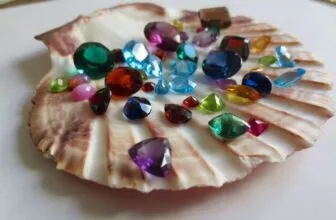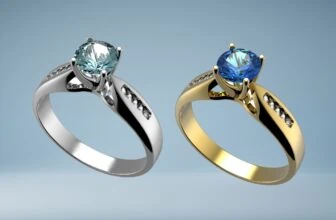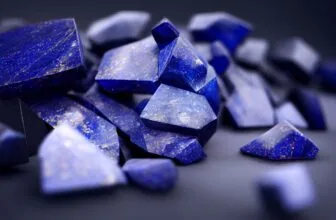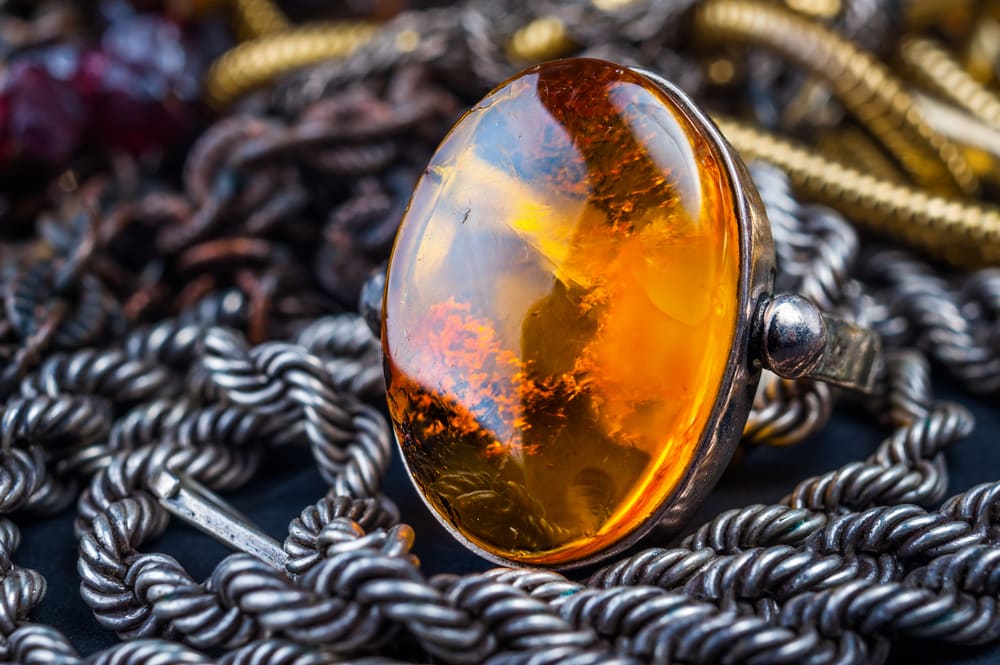
Table of Contents
If you are someone who admires the unique in nature, amber is sure to interest you. This gemstone is one of the oldest that has been used for jewelry, dating back around 13,000 years, and is famed for its golden colors and simple beauty.
Amber has several characteristics that make it a unique gemstone. Here’s what to know when purchasing amber gemstone jewelry.
What is Amber?
Although we call it a gemstone, amber is made of fossilized tree resin. Resin is a fluid that oozes from certain type of trees, mainly coniferous, such as pine trees.
Oftentimes, insects, leaves, mosquitoes, and other organic matter gets trapped in resin and becomes fossilized along with it. This makes amber a great resource for scientists to explore ancient living things.
Because amber is soft, it can be burnt, and exudes a pine-scented aroma. The stone can even yield oil if heated under correct conditions.
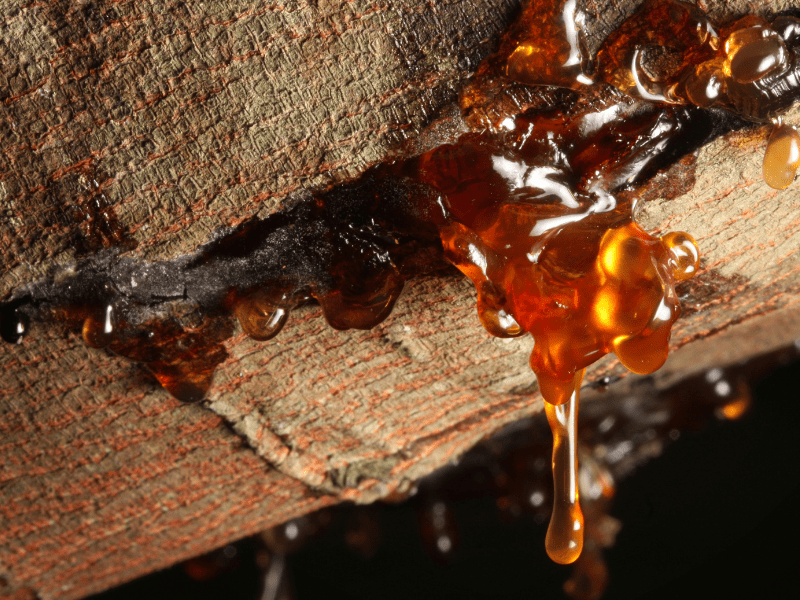
Another curious fact about amber is that is has electrostatic properties. You can rub an amber gemstone for 20 to 50 seconds and you’ll find that it attracts little objects. If it does not, you probably are dealing with glass or plastic.
Unlike most other gemstones, amber has numerous uses. It has been used:
- In crafts, includings tobacco pipes or jewelry boxes, like this highly valuable handmade Baltic amber jewelry box.
- To remove lint from clothes (due to its static property)
- To make perfume
- In folk medicine
Even today, amber teething necklaces and bracelets are popular among mothers, even in the Western world, who believe that it is a natural painkiller for their babies, even though there is no scientific evidence to prove this.
Types of Amber Gemstone
We tend to think of amber as always being honey-colored, smooth and with interesting inclusions. But in fact, there are many different amber varieties on the market. Amber is typically categorized according to its region of origin.
1. Baltic Amber
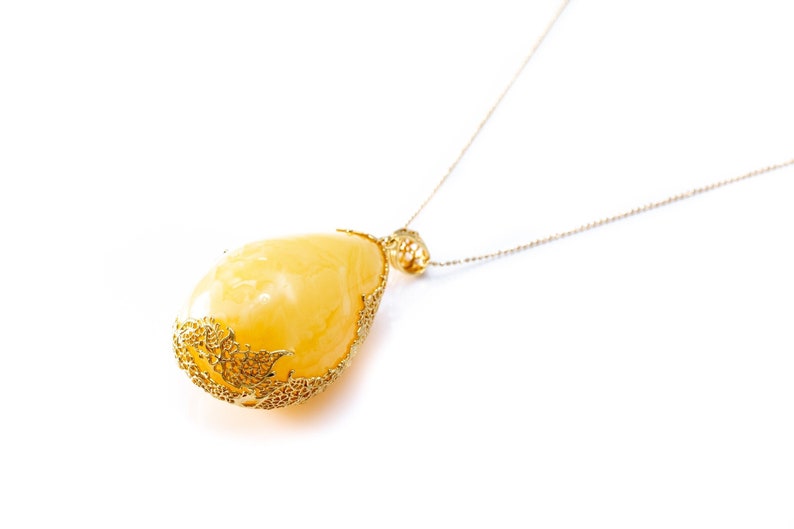
The most type of amber is Baltic amber, which comes from the Baltic Sea shores. Baltic amber is thought to be the highest quality, which makes it valuable. This natural amber can be over 40 million years old, and comes in a range of colors, from dark yellows to white.
2. Dominican Amber
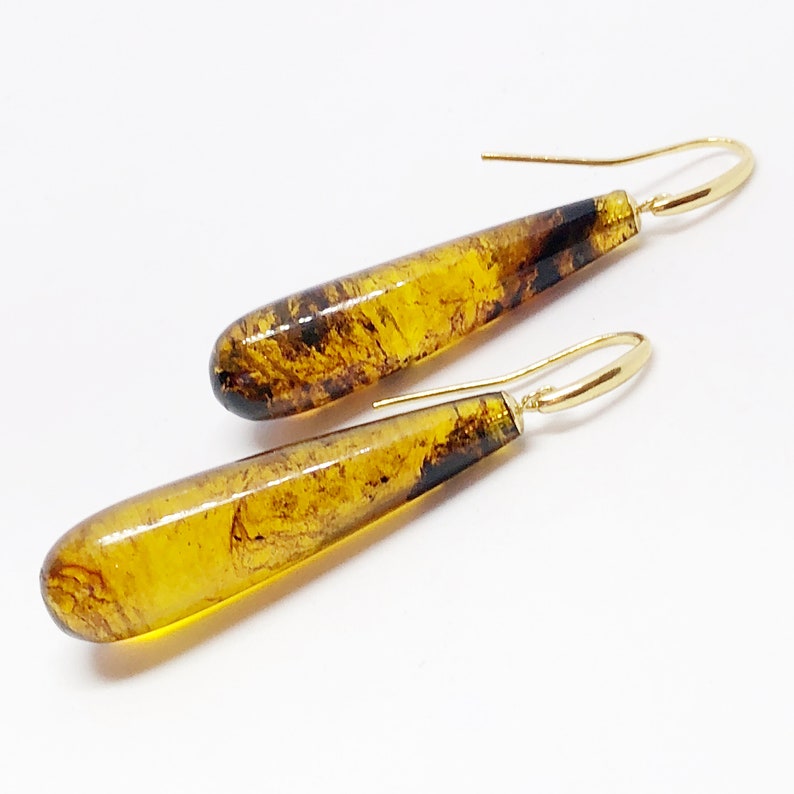
Another highly valued variety is Dominican amber, which generally has more inclusions. Dominican amber can be between 25 to 40 million years old and can even be found in blue and green colors, like this blue Dominican amber ring. There are also Sri Lankan, New Jersey, and Mexican amber varieties among others.
How to Evaluate Amber
As with all gemstones, amber is also evaluated using the 4Cs.
1. Amber Color
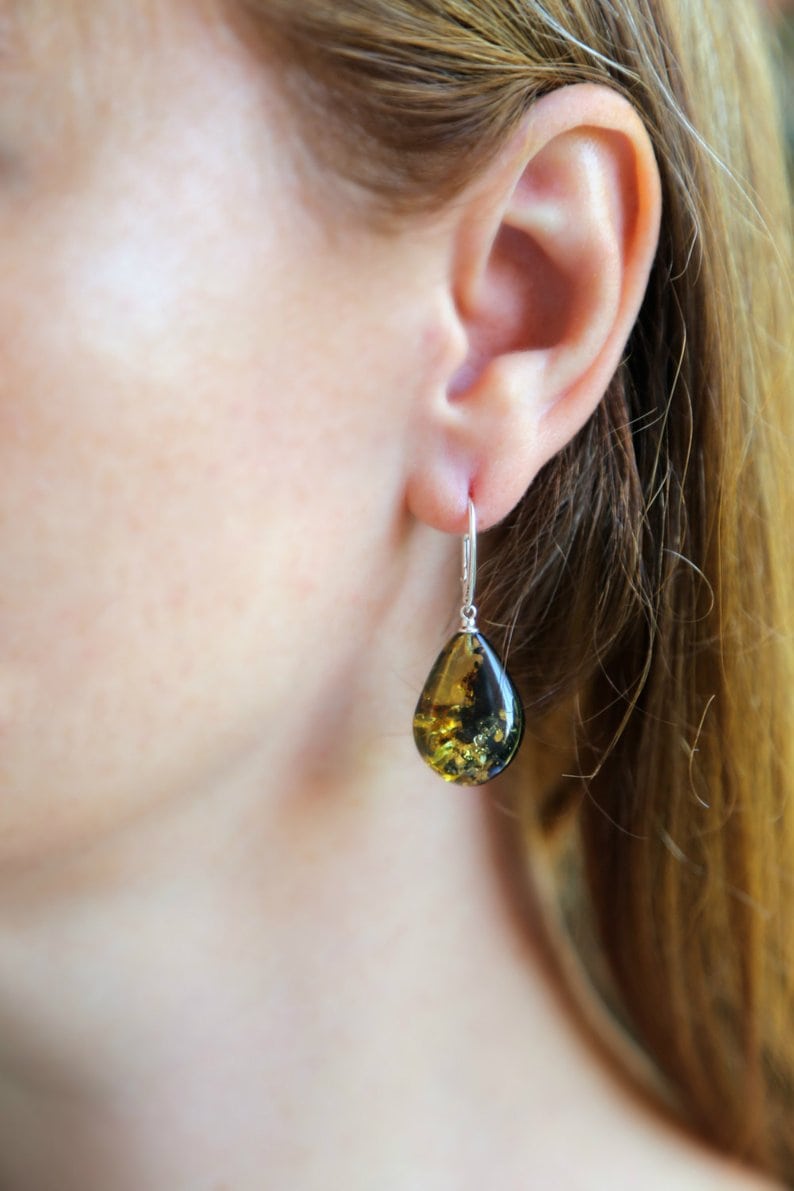
Amber comes in a variety of colors. Probably the most popular and easily recognized are the shades of cognac and yellow. You can also find amber in black, cherry, green, butterscotch, and white, which are rarer varieties.
- Yellow Amber makes up around 70% of all amber found. It can also appear orange or brown depending on the bubbles in it. This color is mainly found among the Baltic Sea variety.
- Green Amber is formed when fresh flora is a part of the formation of the amber fossil. Green amber is rare and valuable.
- Red Amber is commonly called Cherry Amber. It is very rare and valuable. The natural red is slightly rusty and can be found from golden red to dark brown.
- Blue Amber is an extremely rare and very expensive variety of amber. This type is brown or yellow in color, but when held up to light that contains UV, such as sunlight, it produces a vivid blue shade.
- Black Amber is a very dark red or brown color. This color is formed when tree resin was mixed with soil or other dark inclusions.
2. Amber Clarity
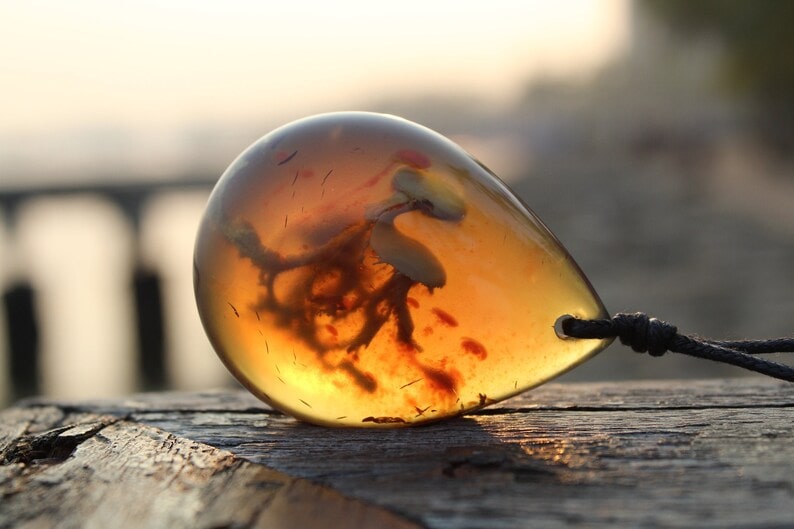
The beauty of amber, unlike many other gemstones, is in its imperfections, especially the inclusions within. Amber almost always is found with inclusions. While clear amber is valuable, amber with interesting inclusions is often pricier, like this large amber stone with an ancient spider inclusion.
3. Amber Carat Weight
Amber is a light stone and feels light to the touch, even in large sizes. In fact, it even floats on salt water. As carat refers to weight and not size, a 2 carat amber gemstone, for example, will be about 2.5 times larger than, say, a 2-carat diamond.
4. Amber Cut
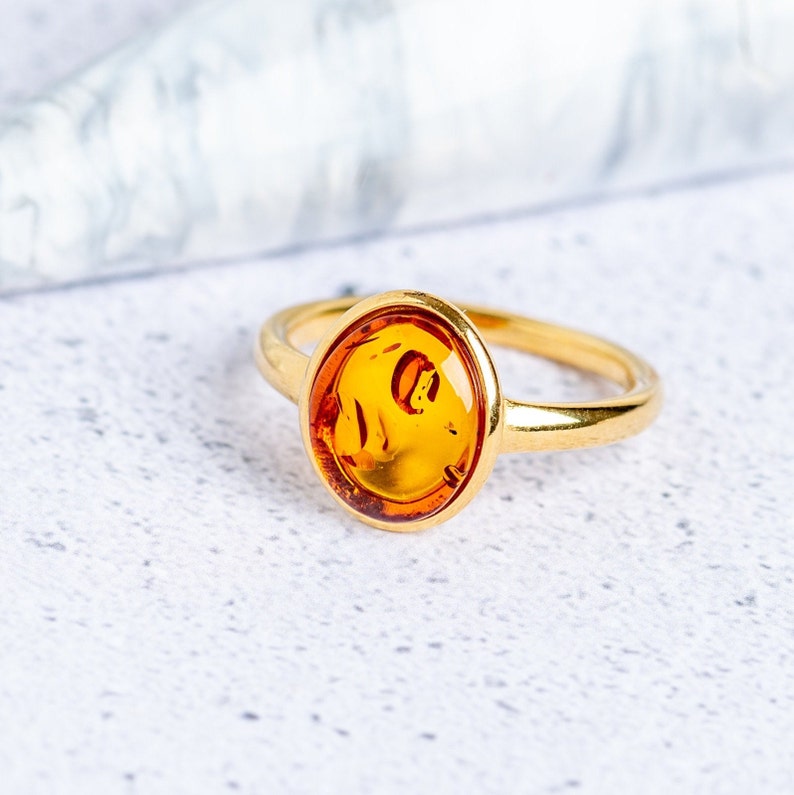
As amber is soft, it’s often carved, faceted, or shaped into various designs. Jewelry makers sometimes opt to heat the stone, which makes it softer and easy to shape. This does not change the natural properties of the stone and is called pressed amber.
Amber is almost always cut into cabochons for jewelry as it brings out the color of the stone and highlights its inclusions. Round and oval shapes are the most popular. Other shapes available in the market are stars, hexagon, pentagon, triangles, and hearts.
Amber Jewelry
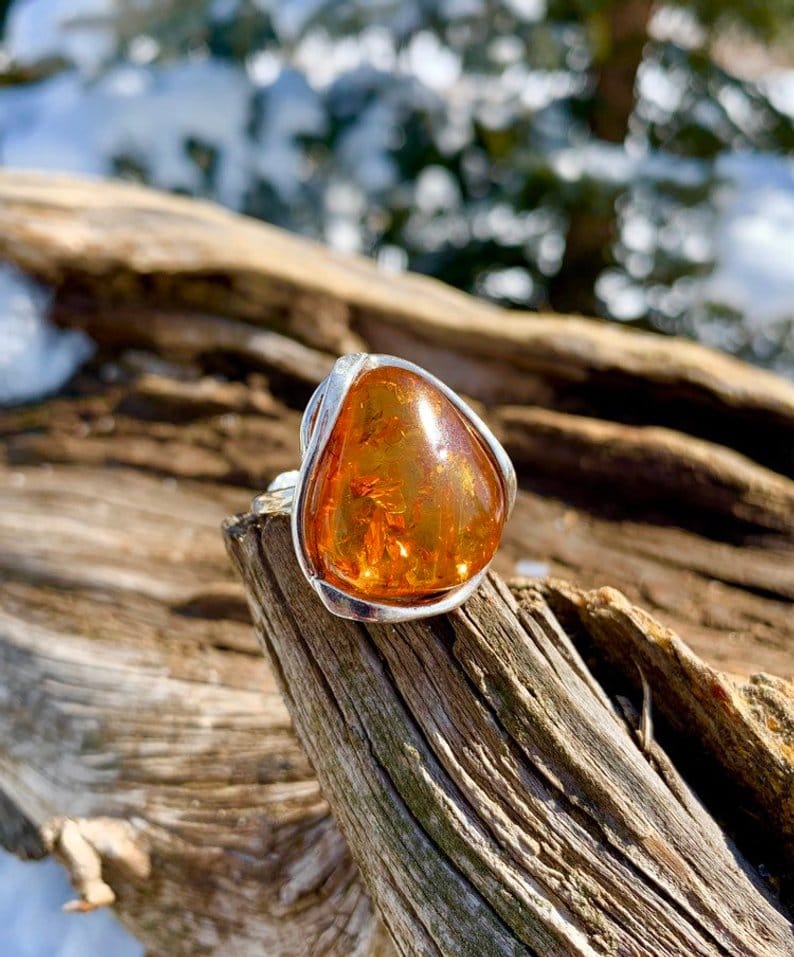
Now that we’ve had a look at all the background information, let’s get right into the heart of the matter – the reason we are really here: Amber jewelry.
Amber is made into all types of jewelry, including necklaces, bracelets, brooches, earrings, pendants, rings, and cufflinks. The inclusions in amber can be eye-catching and is stunning in a scientific, historical way. It’s trendy and makes for a talking point.
Some people prefer white metals, such as white gold and silver, as the contrast brings out the color of the gemstone and enhances its beauty. This vintage silver amber ring is a good example of this look.
On the other hand, you could use yellow gold or rose gold settings, like this split shank ring. While these do not provide as stark a contrast as silver, they tend to soften the color of amber and blend into the stone. There is no right or wrong choice, however. What matters is what you prefer.
Enhanced Amber Gemstones
Jewelers often use various treatments to enhance the color, clarity, or improve the durability of amber. Here are some ways this is done:
- Cloudy amber with tiny bubbles within is not very valuable. That’s why the jewelry makers clarify it by boiling it in linseed oil or rapeseed oil. It’s slowly heated in the oil up to boiling point. The tiny bubbles then filled up with oil and disappear.
- Because green and red amber are rare and expensive varieties, some jewelry makers change the color of the more affordable and common variety of yellow amber. They apply a black paste on the surface, then heat the stone to clarify it and make it bond with the paste.
- The color of amber is also modified by heat treatments and dyeing. This is done so that the stone can imitate the colors of more expensive varieties.
Beware of Amber Imitations
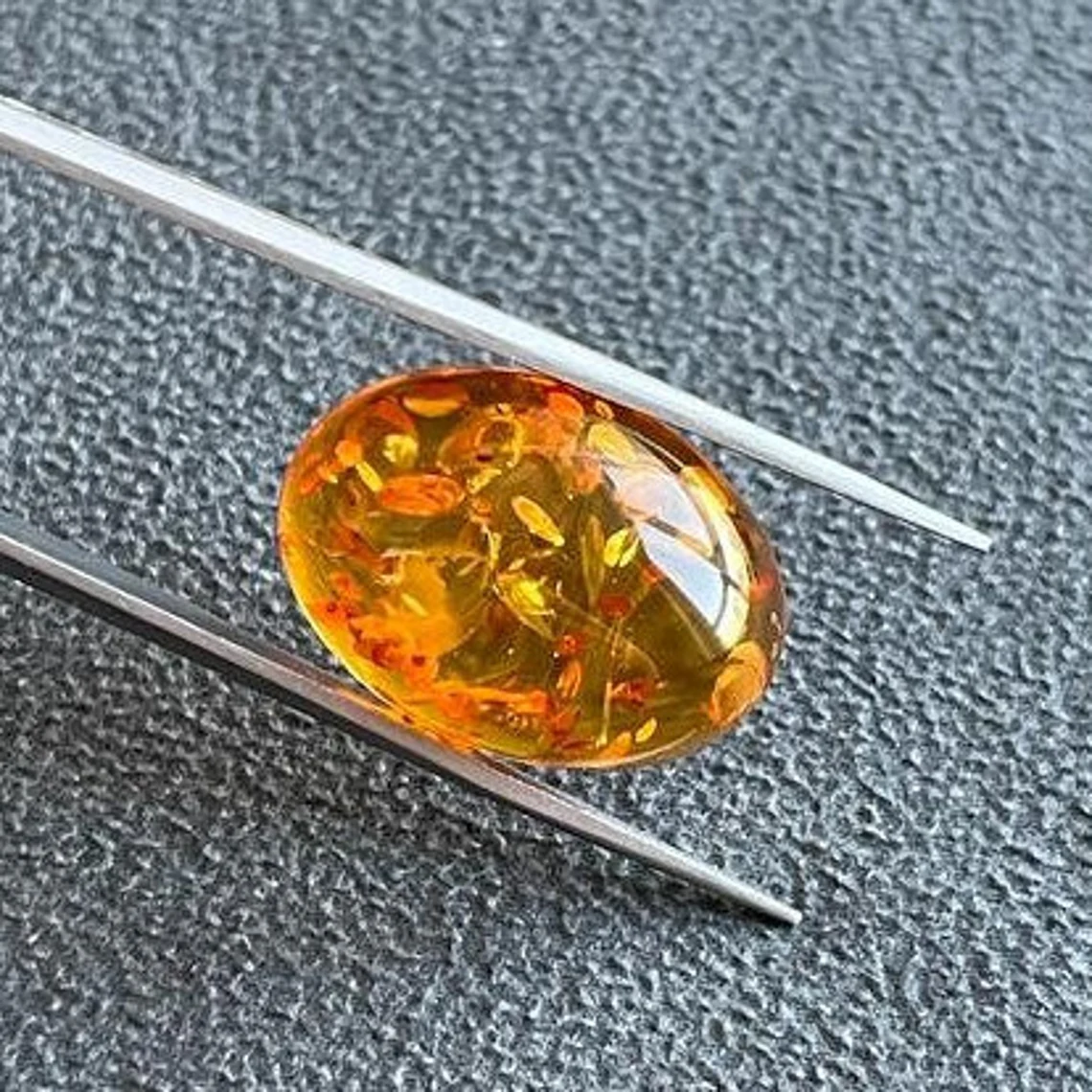
The most common amber imitation being sold is copal. Copal is not quite hardened resin and not quite sap – it is somewhere in between these. Copal looks like amber but is younger and of a different texture, making it less valuable.
Other imitations include glass or plastic. Sometimes, the fake stones are found with interesting fake inclusions like insects, leaves and flowers.
How to Tell if Amber is Real
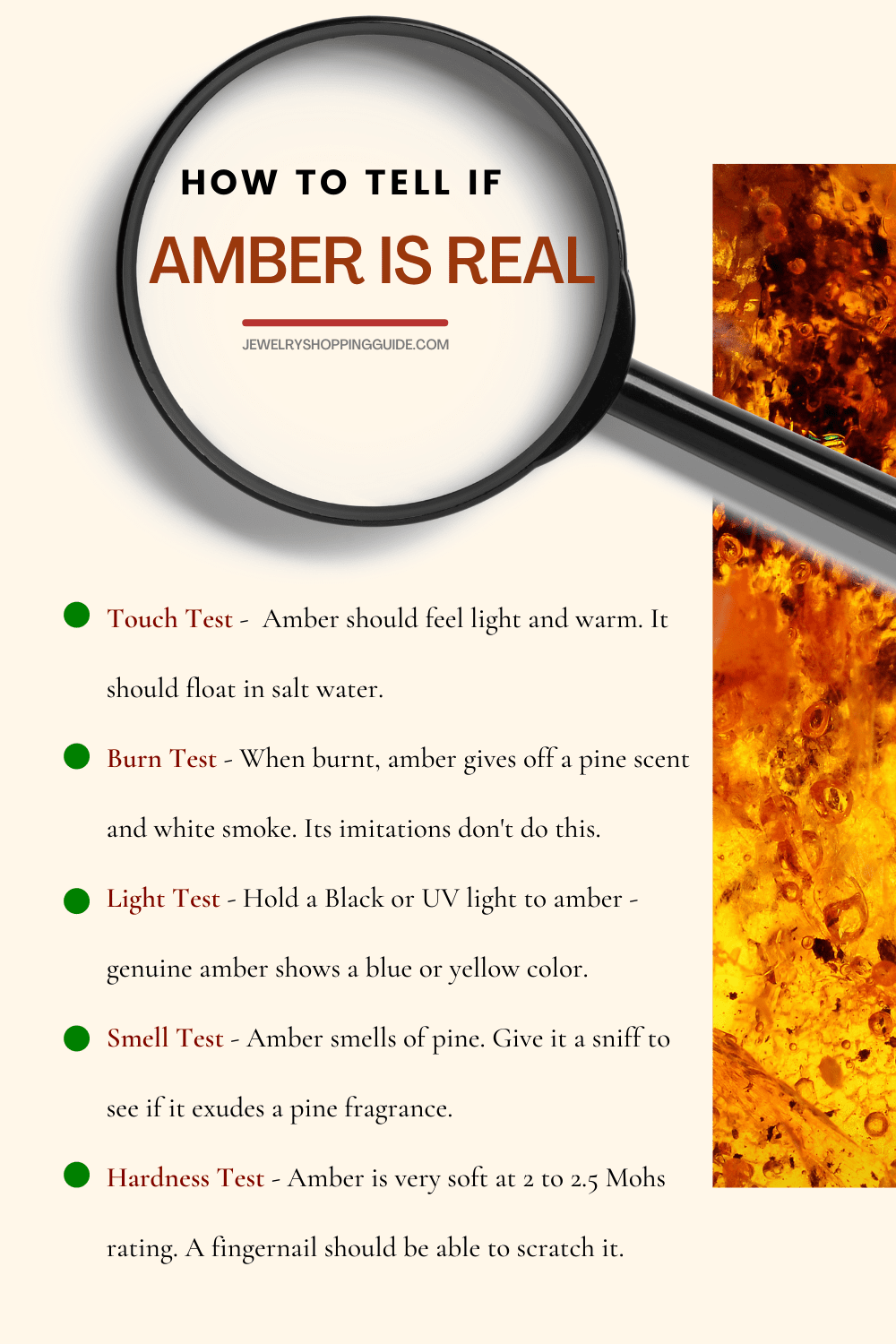
It’s is easy to tell fake amber from real amber. Here are several ways you can test the stone out for yourself.
- A real amber exudes warmth when touched. Feel the stone and check out its warmth. If it is cold, it is most likely a fake.
- Genuine amber has a pine-like smell. Bring the amber close to your nose and check if it has this scent.
- Amber is very light in weight and can float in salt water. Combine 1 part of salt with 2 parts of water and put the stone in it. Plastic, copal, and glass will sink. True amber will float.
- Probably the most reliable test is the burn test. Amber burns but does not melt, unlike copal and plastic. You may not want to do this to your amber jewelry but if you touch a red-hot needle to amber, watch to see if it burns, releasing white smoke and pine fragrance. If it does so, it is genuine amber. Plastic will smell of chemicals and will melt. Copal will have a similar smell to genuine amber but will also melt and will not produce white smoke.
- If you have a Black or UV light, hold it to your amber stone. If it exhibits a blue or yellowish color, it is genuine. Copal will be white while plastic will have no reaction to the UV/Black light.
Cleaning and Caring for Amber Jewelry
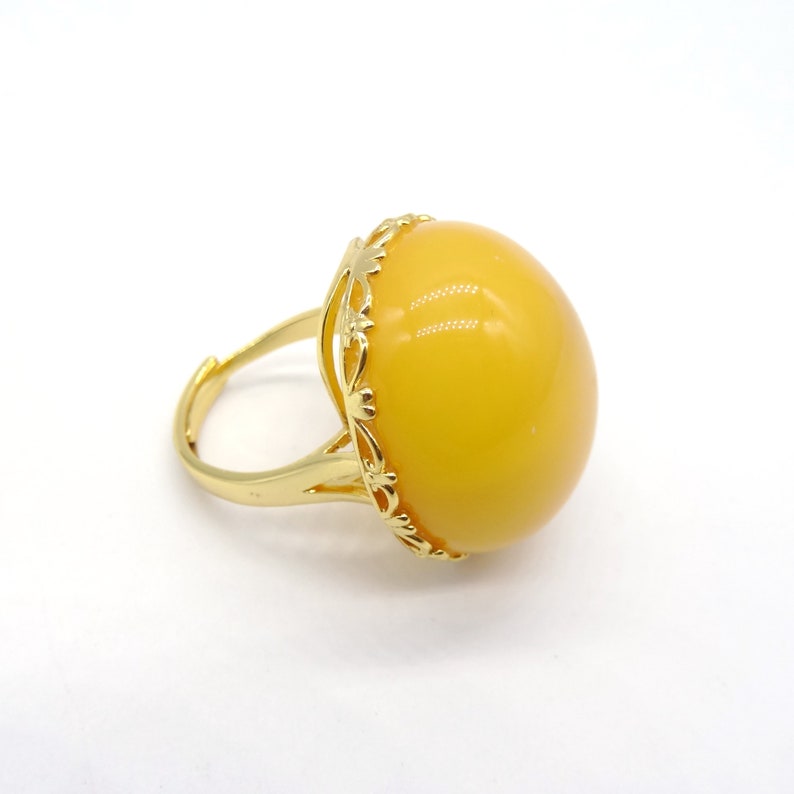
As we mentioned before, amber is one of the softest stones with a hardness rating of only 2 to 2.5 on the Mohs scale. That’s the same hardness ranking for a fingernail, which is a 2. This ultra-softness means that amber requires some extra care.
Separate Storage
Don’t store amber jewelry with items that have faced edges or pin stems. Amber should be kept separately from all other gems and metals and should be wrapped in a soft cloth to protect it from scratching.
Amber is sensitive to acid, gasoline, caustic solutions, alcohols, and some perfumes. Apply your perfume and lotions before you wear amber jewelry. If you expose amber to extreme hot or cold temperatures, there is a chance the stone can crack.
Cleaning Amber
Never use an ultrasonic cleaner, soap, or detergent when cleaning amber jewelry. Instead, use a soft cloth.
Amber shouldn’t be soaked for a long period of time as it may damage its shine. You can easily clean your amber using a soft cloth to wipe away dirt.
If the stone is losing its luster, polish it with a bit of olive oil to bring back its shine. Make sure to wipe away excess oil as this can damage the amber. It’s also best to take off amber jewelry before showering, swimming, or engaging in other water related activities.
Amber Meaning and Symbolism
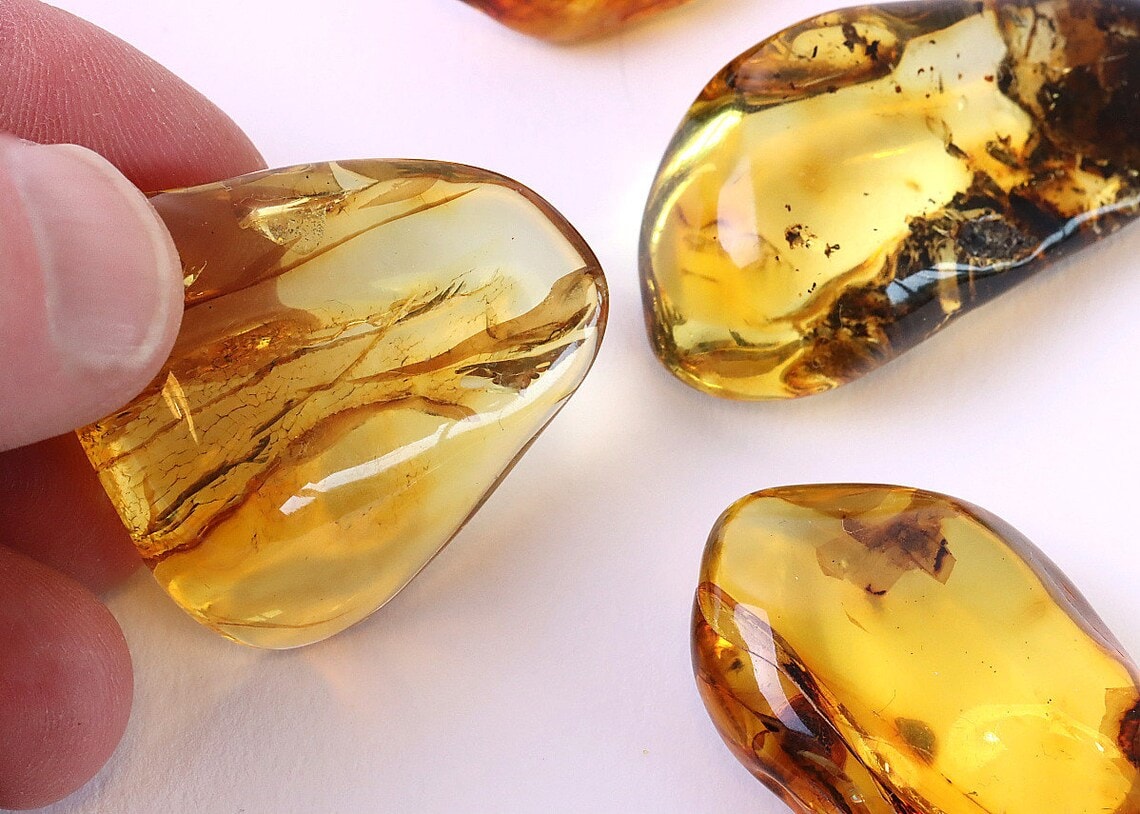
Amber has a long history and over time has acquired various mystical beliefs. Amber was seen as a stone of protection, and people wore amber amulets for safety from certain diseases and when traveling.
Amber was believed to bring luck to the wearer and to help a person think clearly in times of stress.
Amber is believed to repel negative energy and to bring positivity and confidence. It is a healing stone, believed to bring peace, eliminating headaches and stress.
*Disclaimer: Jewelry Shopping Guide does not guarantee or validate any of the claims related to the metaphysical and alternative healing powers of this or any other gemstone. This information should in no way be used as a substitute for medical advice.
Where to Buy Amber Jewelry
Amber is a mainstream gemstone and there is high demand for it, so finding amber jewelry at your local store might not be too difficult. However, for more options and some gorgeous designs, we suggest searching online. If searching for amber jewelry on the internet, ensure that you’re buying from a reputable store with a proven track record.
We recommend starting your search on Etsy as there is an abundance of amber jewelry at a range of price points and to suit a variety of styles. Each Etsy store has its own policies and rules, so make sure you check reviews and the after sales policies of the store before you purchase.
Amazon also provides an excellent variety of amber jewelry. As Amazon is such a massive platform and offers everything, you’ll need to filter and sift through their inventory to find the right piece of amber jewelry for you.
Wrapping Up
Amber is one of nature’s most intriguing ‘gemstones’. It’s easy to spot, and its unique properties make it stand out. Amber’s beautiful warm color and glow make it perfect for jewelry, although it’s softness means it needs to be worn with care.


